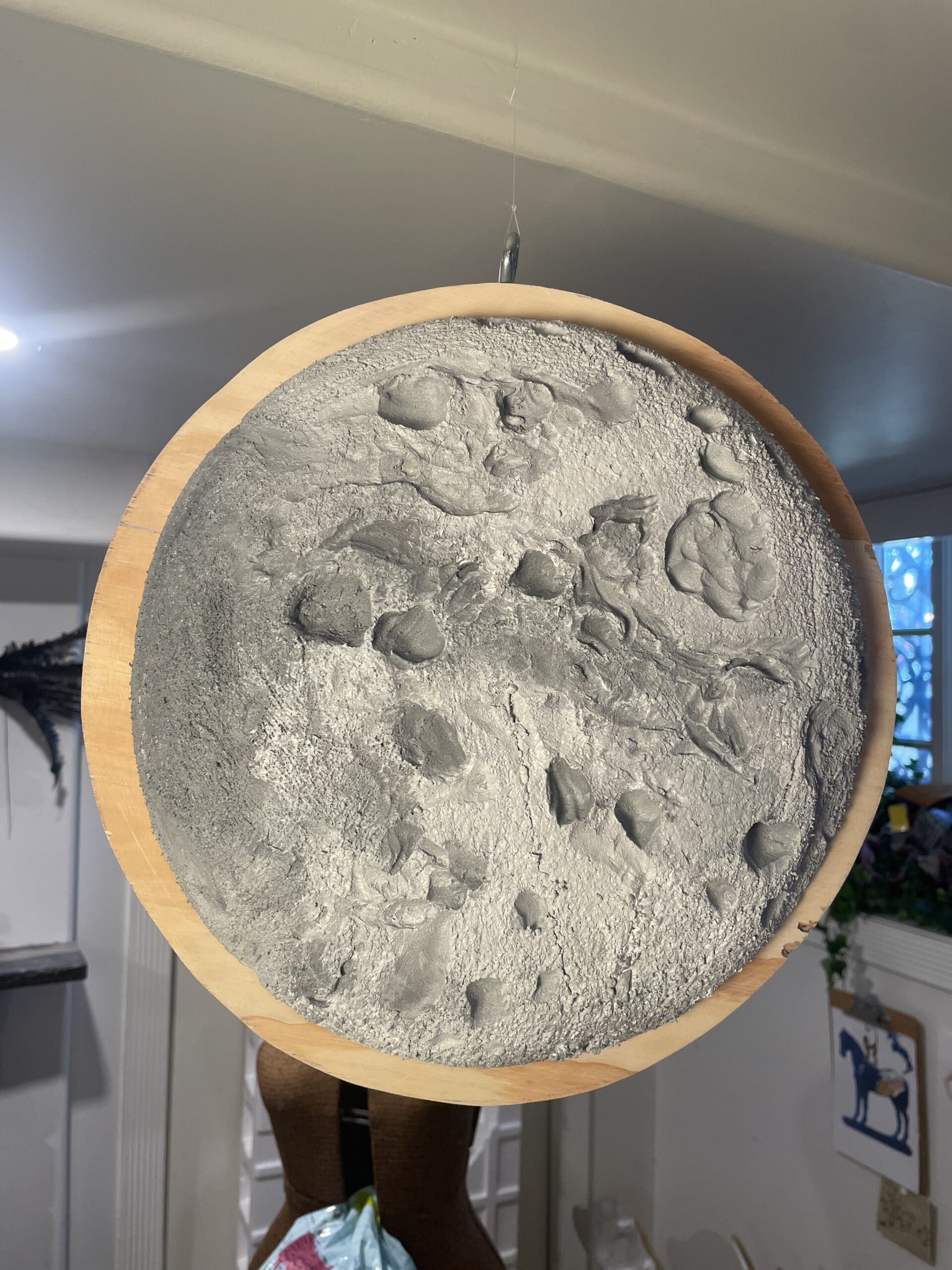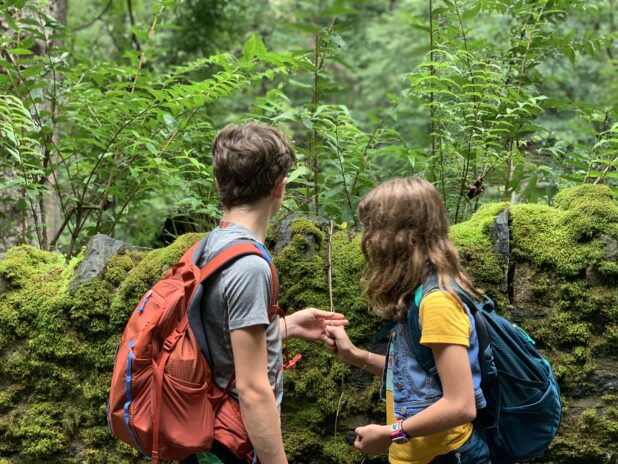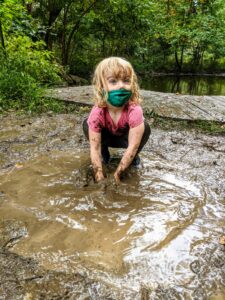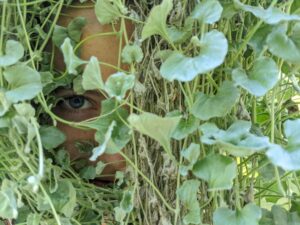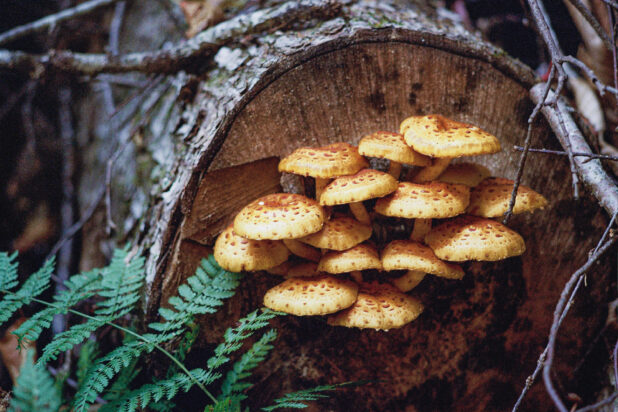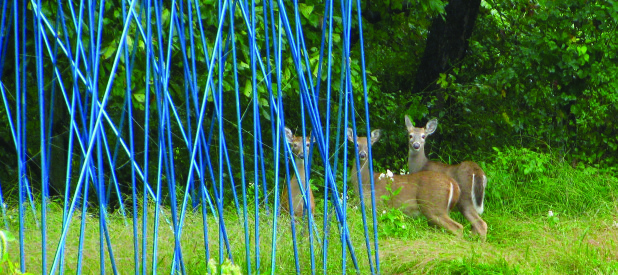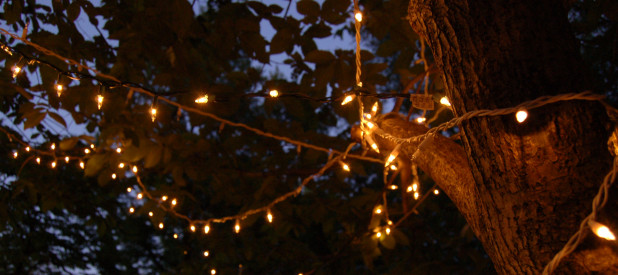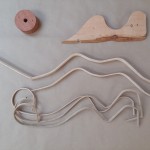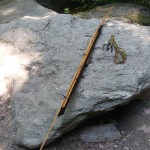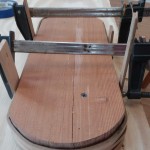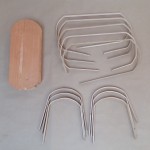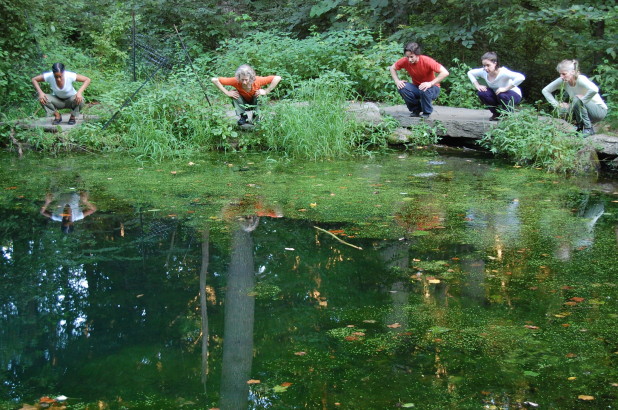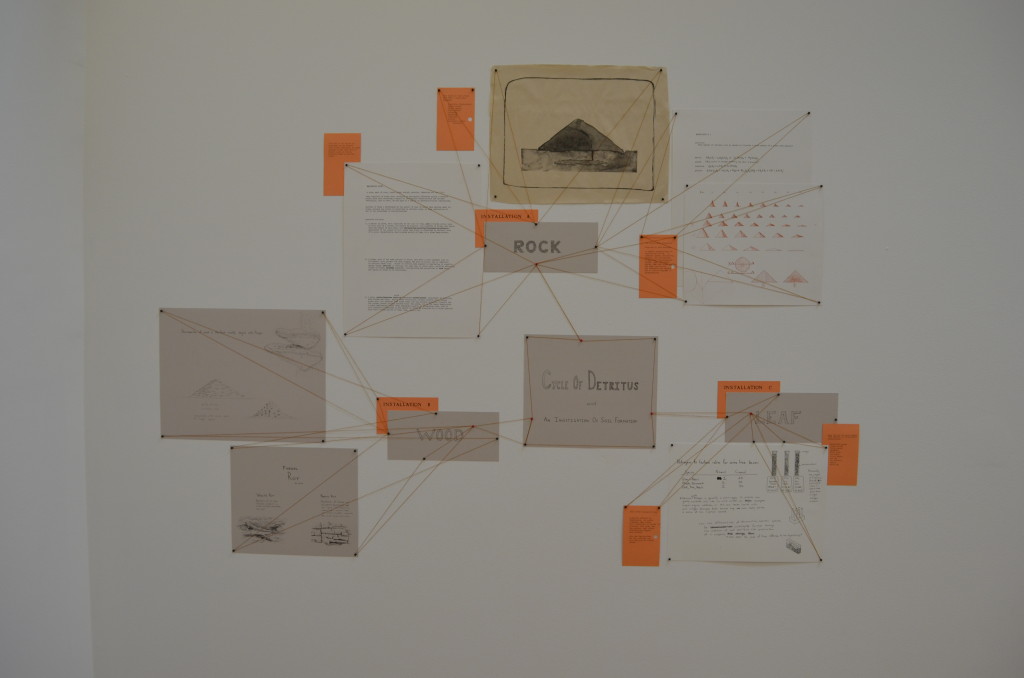It almost could be another tree, except for the ears. Look a little closer and you realize it’s a deer, stock-still and staring at you through the morning mist. As autumn leaves rustle, its silent appraisal reminds you: you are not alone. These woods are a shared space.
This encounter is captured in a photo by Peter DeStefano, one he submitted to the upcoming community show, “Citizen’s Eye — A Kaleidoscope of Nature.” More than 400 photos taken by over 200 people—Schuylkill Center staff, members, volunteers, neighbors, friends—document surprising encounters with nature from the past 10 months. Every photo is included in the exhibition, making for a truly kaleidoscopic display.
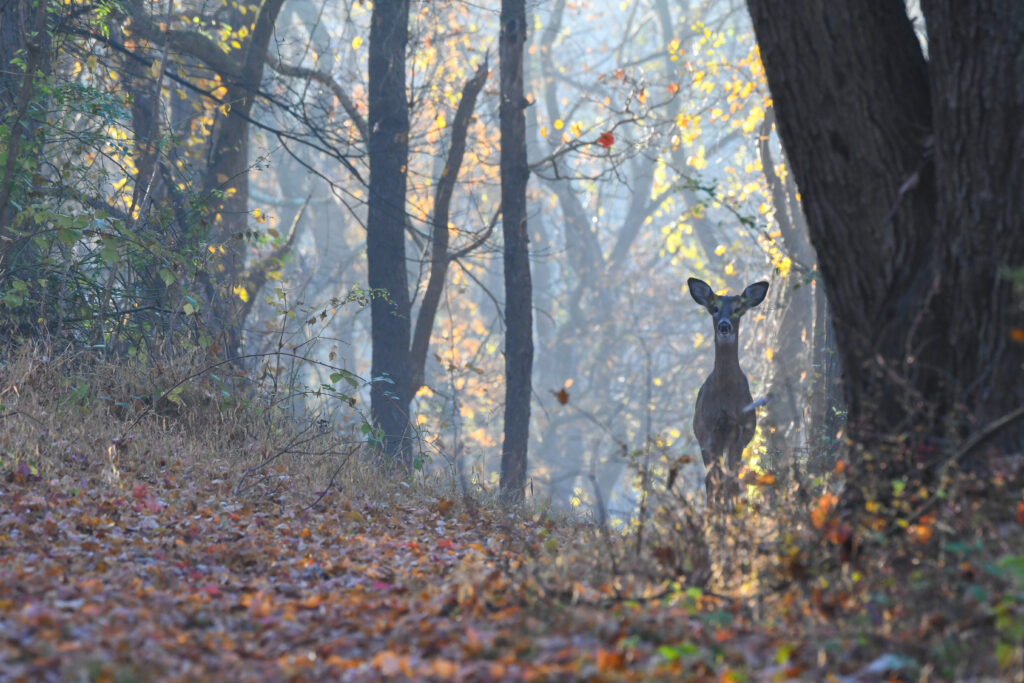
Photo by Peter DeStefano, submitted to “Citizen’s Eye”
Director of Environmental Art Tina Plokarz and her team have been sorting through these images, arranging them in our gallery, while looking for patterns. Some photos show structures of bridges and buildings; many are close-ups of animals or plants. They all come from a heightened sense of awareness to our natural surroundings and a willingness to stop and focus on smaller things. Taking such a photograph of nature requires that you not just move through the world but slow down enough to notice it. That you become a reciprocal part of it and live in it.
While each image reflects its photographer’s interest, collectively they begin to tell a story, one that begins with people going out to find nature—whether for peace, solitude, or recreation—and discovering that it’s always right beside them. Nature with a capital ‘N’ may conjure up romantic notions of sublime landscapes in National Parks, grand mountains, and expansive deserts. But nature with a lowercase ‘n’ encompasses everything around us. It’s “the small things we’re experiencing every day,” Tina says. “It’s not only about blooming flowers, it is also about the little weed on the sidewalk.”
A number of photos feature kids and adults outside—playing, building, exploring, living. Some are posed; some are candid; one is a silhouette. “When we really think about ‘nature’ and where this term comes from,” Tina says, “we quickly see that it’s not only the ‘natural world’—it’s also our world context, it’s also our body, it’s our human interaction with the environment. And I think that’s what I was really interested in seeing through other people’s eyes.”
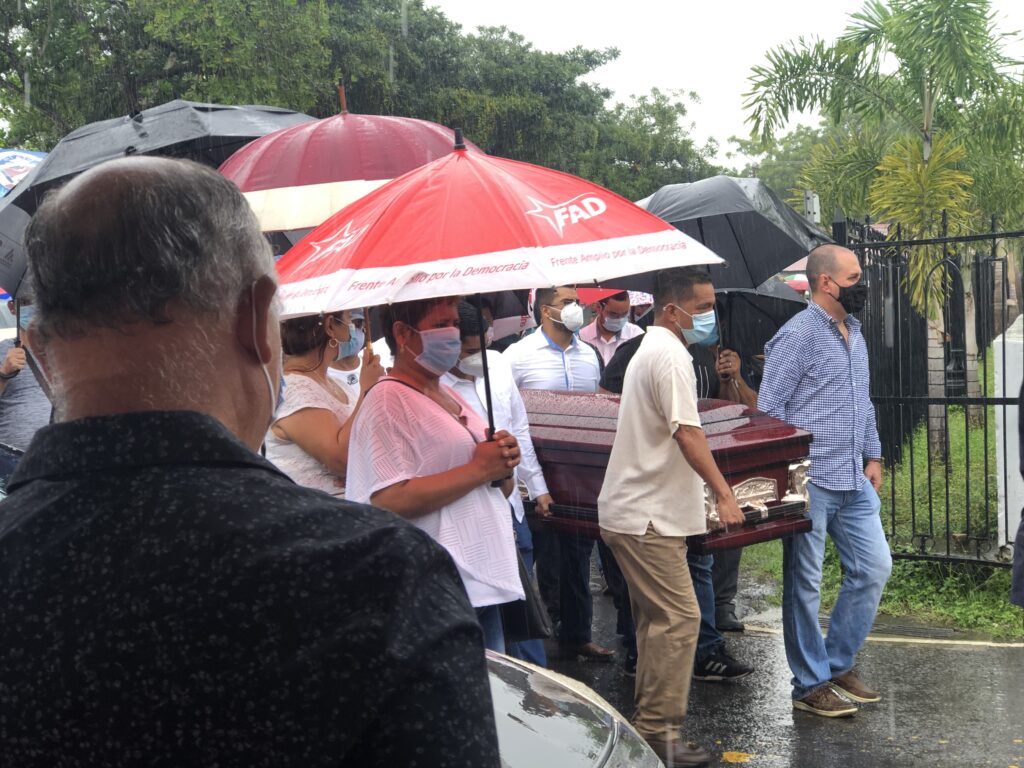
Photo by Walther Vera, submitted to “Citizen’s Eye”
Nature is also around us, inevitably, in death. One particularly striking photo is of a funeral with masked mourners holding big red umbrellas and carrying a casket down the street. At first, it may seem like it doesn’t belong in a show of nature photography. But it made Tina consider how other nature photos capture death and decay. Several images, for instance, show mushrooms sprouting from dying trees. The rotting wood provides the nutrients necessary to grow a network of fungi that spreads throughout the forest—itself an offering to trees and a vital connection between them. “It’s this circle of life,” she says, “and death is part of our lives.”
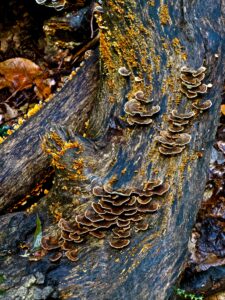
Photo by Peter Handler, submitted to “Citizen’s Eye”
That topic of death is “hard to grapple with as it relates to the pandemic,” Tina says. But that’s why offering a place for people to share their experiences with nature is so powerful. “I think it allows us a space for grief, and for thinking how, when a tree is dying, it is not dying, it is just transforming into something else.”
Ultimately everything in nature is interconnected, everything shared. “Citizen’s Eye” reflects this in its community display, ready to welcome you in and transform your own encounters with nature.
“Citizen’s Eye —A Kaleidoscope of Nature” will be available to view in person in our gallery and online from January 21– March 21, 2021. Join us for a virtual opening reception on Thursday, Jan. 21 at 7 pm for a conversation with mythologist and social practice artist Li Sumpter Ph.D., John Heinz National Wildlife refuge manager Lamar Gore, and designer CJ Walsh, moderated by Tina Plokarz. For more information and to register, visit: https://www.schuylkillcenter.org/blog/event/citizens-eye-a-kaleidoscope-of-nature/
—By Emily Sorensen

